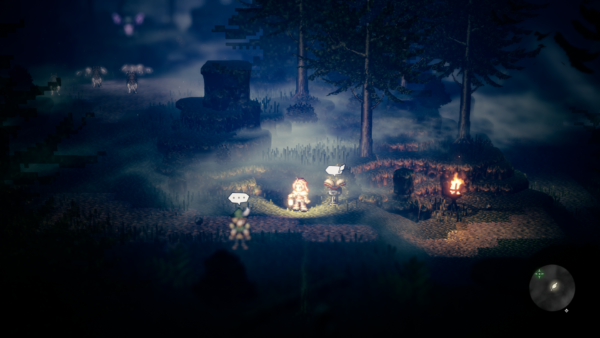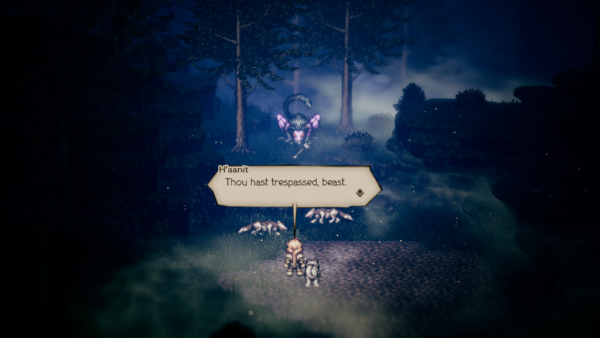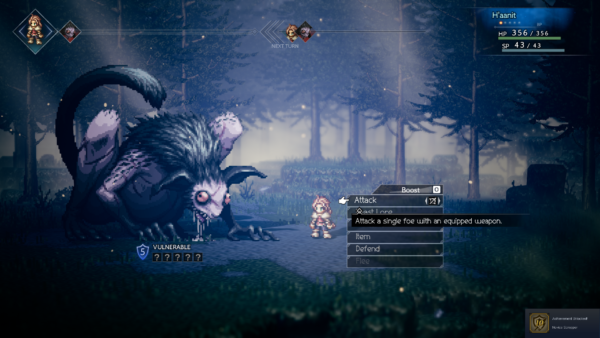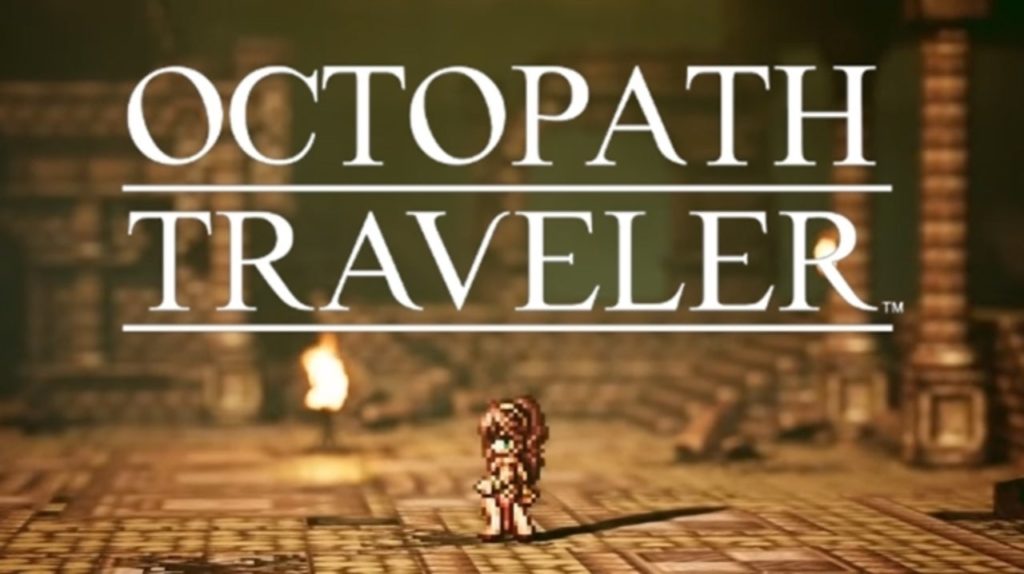Octopath Traveler, PC review
I had no idea what to expect when my editor asked me if I was keen to take a look at Octopath Traveler on PC.
I’d obviously heard about Octopath Traveler on the Nintendo Switch but that was about as far as it went. That said, I’m about mixing things up, so I said “Why not?”. The game is, after all, a big deal apparently. It’s fun, too.
At it’s heart, Octopath Traveler is a turn-based role-playing game with eight playable characters, eight journeys and eight stories. It’s told in a charming graphical style that the developer itself describes as “HD-2D”, which combines “retro retro Super NES-style character sprites and textures with polygonal environments and high-definition effect (thanks, Wikipedia)”. It looks incredibly nice: Grass sways in the wind, fire burns in braziers, monsters growl in the distance, light shafts shine on the ground, all rendered in a glorious 16-bit asthetic with a modern polish.

Set in the land of Osterra, the story is pretty deep and convoluted with deities and gods but in a nutshell follows the journies of the eight characters as they wander about Osterra.
Each character starts the game from a different location in the game world, meaning no two stories are the same, and each character has a different path ability that can be used during interactions and combat.
I started my playthrough as H’aanit, a hunter who had a path action of provoke and a talent of capture. The tutorial had me provoke villagers from the starting township into fighting me. They lost, obviously.
H’aanit also has an animal companion called Linde, who proved super useful during combat situations.
Characters can interact with NPCs and the dialogue is liberally sprinkled with old English (some of it, perhaps, taken to the extreme) with it not uncommon for a character to spout “ye”, “looken”, “’tis” and “thou” multiple times in one sequence.
Sure it gives the game a cutesy old world feel but I felt at times that Ye Olde English was taken to the extreme.

When your character stumbles across an enemy (and you will literally just stumble across enemies as you wander around Osterra), you can provoke them into battle, with victory garnering XP and something called JP.
During combat, you can switch between whatever weapons you are carrying and change tactics, depending on whatever vulnerability the enemy has. Being turn-based, you’ll often make two attacks against a foe, analysing their weakness beforehand, then wait while they attack you.
A nice touch is that once an enemy’s shield has been broken, you can activate Boost mode, which is like a superpowered attack that will usually defeat low-level enemies and seriously injury stronger enemies.

While the game play does get a little repetitive after a while (but what game doesn’t, I guess?), the fact that you have eight different characters to adventure with provides that game with some longevity and re-playability.
One thing I have to touch upon is the game’s orchestral soundtrack: It’s wonderful. Cheery with flutes and trumpets and strings, it’s a stirring backdrop to the game and is perfectly suited to an adventure game of this magnitude.
Word is on the internet is that the main story will take you close to 60 hours to complete -and that’s not including visiting all the side areas and optional bosses – so Octopath Traveler is going to keep turn-based fans busy for some time to come and it’s a game that wonderfully marries the 16-bit asthetic with a modern twist.



